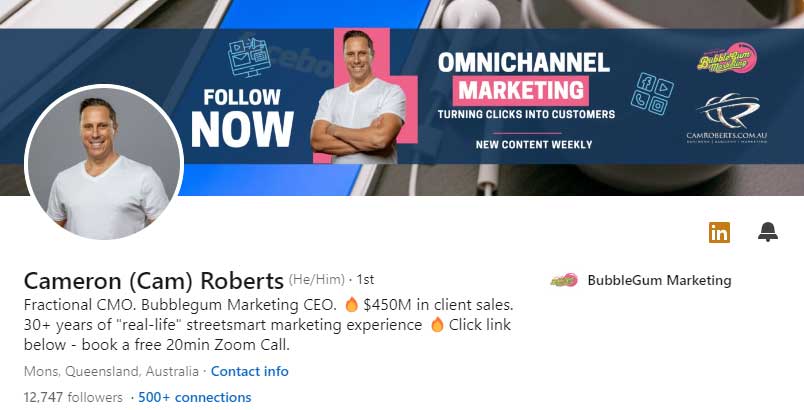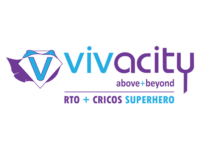How Many Responsive Search Ads Can You Create in Google Ads
By Cameron Roberts – Founder & CEO of Bubblegum Marketing,
Posted On February 9, 2025
In the ever-evolving world of search engine marketing, responsive search ads (RSAs) have emerged as a revolutionary tool for advertisers. These ads, with their dynamic customization capabilities, ensure that your message reaches the right audience with the precise message at the optimal time. But how many responsive search ads can you actually create in Google Ads? Let’s delve deeper into the details.
Understanding Responsive Search Ads
Responsive search ads are an innovative ad format in Google Ads that empowers advertisers to input multiple headlines and descriptions. Google harnesses machine learning to experiment with different combinations of these elements, identifying the best-performing ones for specific search queries. This flexibility enhances the relevance of your ads to potential customers, thereby boosting overall ad performance.
The Mechanism Behind RSAs
At the heart of RSAs is the sophisticated machine learning algorithm that Google employs. This algorithm evaluates various combinations of headlines and descriptions in real-time, learning from each interaction to optimize for the best results. It adapts to user behavior and preferences, ensuring that the most relevant ad is displayed for each query.
Benefits of Dynamic Customization
Dynamic customization in RSAs allows advertisers to cater to a diverse audience with varied interests. By offering multiple headlines and descriptions, advertisers can appeal to different segments within their target market. This capability not only enhances relevance but also increases the likelihood of engagement and conversion.
The Role of Machine Learning in RSAs
Machine learning is the driving force behind RSAs, enabling the continuous improvement of ad performance. It analyzes vast amounts of data to predict which combinations will resonate best with users. This level of automation reduces the manual effort required from advertisers while delivering superior results over time.

The Benefits of Using RSAs
There are several compelling benefits to incorporating responsive search ads into your search engine marketing strategy:
Increased Reach and Adaptability
RSAs have the ability to adapt and display more text and relevant messages tailored to individual customer preferences. This adaptability translates into a broader reach, as the ads can cater to various search intents, thereby capturing a larger audience.
Enhanced Performance Metrics
Through the testing of multiple combinations of headlines and descriptions, Google can pinpoint the most effective ads. This leads to improved performance metrics such as higher click-through rates (CTR) and better quality scores, ultimately driving more traffic and conversions.
Streamlined Process and Time Efficiency
Instead of manually creating numerous ad variations, RSAs allow advertisers to input various elements and let Google’s algorithms perform the heavy lifting. This streamlining of the ad creation process saves time and resources, enabling marketers to focus on other strategic initiatives.
Cost-Effectiveness
RSAs can lead to reduced costs per acquisition by optimizing ad delivery to the most relevant audience segments. By maximizing ad performance, advertisers can achieve better results without significantly increasing their budget.
How Many Responsive Search Ads Can You Create?
Google Ads permits the creation of up to three responsive search ads per ad group. This limit is strategically set to ensure that advertisers concentrate on developing high-quality ads, rather than overwhelming their campaigns with excessive variations.
Strategic Limitations: Encouraging Quality Over Quantity
The limitation of three RSAs per ad group is not arbitrary but rather a strategic choice. It encourages advertisers to invest time in crafting well-thought-out, high-quality ads. By focusing on a limited number of ads, advertisers can ensure each one is optimized for peak performance.
Leveraging Google’s Machine Learning Capabilities
Even with a restricted number of RSAs, Google’s machine learning algorithms can generate a multitude of ad variations. This capability ensures that advertisers can still achieve significant reach and engagement, even with a limited set of ads.
Balancing Creativity and Strategy
The cap of three ads per ad group pushes advertisers to balance creativity with strategic planning. It necessitates a thoughtful approach to ad creation, ensuring that each element is purposefully crafted to contribute to overall campaign success.

Best Practices for Creating Effective RSAs
To maximize the impact of your responsive search ads, consider the following best practices:
Craft Compelling Headlines
Your headlines are the initial touchpoint for potential customers, so it’s crucial to make them count. Incorporate keywords that align with your ad group, and ensure that each headline offers a distinct value proposition. Google allows up to 15 different headlines for each RSA, providing ample opportunity for variation.
Incorporating Keywords Effectively
Keywords play a pivotal role in RSAs, influencing both relevance and performance. By strategically incorporating keywords into your headlines, you enhance the likelihood of your ads matching user search queries, thereby improving visibility and engagement.
Creating Unique Value Propositions
Each headline should present a unique value proposition that distinguishes your offering from competitors. Highlighting unique selling points or exclusive benefits can capture attention and drive clicks.
Testing and Iterating on Headlines
Continuous testing and iteration of headlines are essential to refining ad performance. Analyzing which headlines generate the most engagement can provide valuable insights for optimization.
Write Diverse Descriptions
Descriptions add an extra layer of context to your ads. You can input up to four different descriptions in each RSA. Highlight key benefits, features, or offers that set your product or service apart from the competition.
Emphasizing Key Benefits
Descriptions should clearly articulate the benefits of your product or service. Highlighting specific advantages can persuade potential customers to take action, increasing the likelihood of conversions.
Differentiating from Competitors
In a competitive market, differentiation is crucial. Use descriptions to showcase what makes your offering unique and why customers should choose you over others.
Aligning Descriptions with Brand Voice
Maintaining a consistent brand voice across descriptions is vital for cohesive messaging. Ensure that your descriptions align with your overall brand identity and messaging strategy.
Use Pinning Wisely
Pinning allows you to control where specific headlines or descriptions appear in your ad. While this can be advantageous, over-pinning can restrict Google’s ability to test different combinations. Use pinning judiciously to maintain flexibility.
Strategic Use of Pinning
Pinning should be used strategically to emphasize critical messaging elements. By carefully selecting which elements to pin, you can ensure that essential information is consistently communicated.
Avoiding Over-Pinning
Over-pinning can limit the effectiveness of RSAs by constraining Google’s ability to experiment with different combinations. Avoid excessive pinning to maintain the flexibility needed for optimal performance.
Balancing Control and Flexibility
Finding the right balance between control and flexibility is key to successful pinning. By allowing some degree of variation, you enable Google’s algorithms to identify the most effective ad combinations.
Monitor Performance and Optimize
Regularly review the performance of your RSAs in Google Ads. Look for insights on which combinations are performing well and make adjustments as needed. Google provides metrics such as impressions, clicks, and conversions to guide your optimization efforts.
Analyzing Key Performance Metrics
Analyzing metrics such as CTR, conversion rates, and cost per conversion can provide valuable insights into ad performance. Use these metrics to identify areas for improvement and optimization.
Iterative Testing and Improvement
Optimization is an ongoing process. Continuously test different combinations of headlines and descriptions to identify what resonates best with your audience and make data-driven improvements.
Leveraging Google’s Insights and Recommendations
Google provides insights and recommendations to help optimize your RSAs. Leverage these tools to refine your ads and enhance performance over time.
Common Challenges with RSAs
While responsive search ads offer numerous benefits, they also come with their own set of challenges. Understanding these challenges can help you navigate the world of RSAs more effectively.
Lack of Control Over Ad Combinations
Because Google determines which combinations to show, advertisers have less control over the final ad presentation. This can be a concern for brands with strict messaging guidelines.
Navigating Brand Guidelines
For brands with stringent messaging guidelines, the lack of control over ad combinations can pose challenges. It’s essential to carefully craft headlines and descriptions to align with brand messaging, even if the combinations vary.
Ensuring Consistent Brand Messaging
Maintaining consistent brand messaging across various ad combinations is crucial. By ensuring that all elements align with your brand voice, you can mitigate the impact of varying combinations.
Communicating Expectations to Stakeholders
Managing expectations with stakeholders is important when using RSAs. Clearly communicate the benefits and limitations of RSAs to stakeholders to ensure alignment and understanding.
Complexity in Messaging
With multiple headlines and descriptions, ensuring consistent messaging can be challenging. It’s important to maintain a cohesive brand voice across all ad elements.
Crafting Cohesive Messaging
Crafting cohesive messaging across multiple ad elements requires a strategic approach. Ensure that all headlines and descriptions align with your overarching messaging strategy and brand identity.
Avoiding Conflicting Messages
Conflicting messages can confuse potential customers and dilute brand impact. Review all ad elements to ensure consistency and coherence in messaging.
Streamlining Messaging Through Iteration
Iterative testing and refinement can help streamline messaging and eliminate inconsistencies. Use insights from performance data to refine your ad elements over time.
Dependence on Machine Learning
RSAs rely heavily on Google’s machine learning algorithms. While these algorithms are powerful, they require sufficient data to function optimally. This means that new campaigns may take time to reach peak performance.
Understanding the Learning Curve
RSAs have a learning curve, especially for new campaigns. Be patient and allow time for Google’s algorithms to gather sufficient data and optimize ad performance.
Ensuring Sufficient Data Volume
For machine learning to function optimally, a sufficient volume of data is necessary. Ensure that your campaigns have enough traffic to enable effective learning and optimization.
Balancing Human Insight and Automation
While machine learning is powerful, human insight is invaluable. Continuously monitor performance and use human judgment to complement the insights provided by machine learning.

The Future of Responsive Search Ads
As search engine marketing continues to evolve, responsive search ads are likely to play an increasingly significant role. Google is constantly refining its algorithms to deliver better results, and RSAs are at the forefront of this innovation.
Embracing Continuous Innovation
The future of RSAs lies in continuous innovation. As Google refines its algorithms and introduces new features, advertisers must stay informed and adapt to leverage these advancements effectively.
Integrating RSAs with Other Ad Formats
Integrating RSAs with other ad formats can enhance overall campaign performance. By combining RSAs with other strategies, advertisers can create comprehensive and cohesive marketing campaigns.
Preparing for a Data-Driven Future
Data-driven decision-making will continue to be a cornerstone of successful advertising. Advertisers who embrace data insights and leverage them for optimization will be well-positioned for future success.
Conclusion
Responsive search ads in Google Ads provide a flexible and dynamic way to reach your target audience. While limited to three RSAs per ad group, this constraint encourages thoughtful strategy and creativity. By following best practices and staying informed about the latest developments, you can harness the power of RSAs to enhance your search engine marketing efforts.
As you venture into creating responsive search ads, remember to focus on crafting compelling headlines and descriptions, use pinning strategically, and continuously monitor and optimize your campaigns. With these strategies in place, you’ll be well-equipped to maximize the potential of responsive search ads and achieve your marketing goals.
WANT TO BE OUR NEXT SUCCESS STORY?
Book a Free Consult
Schedule a 15-minute Free Consultation via Zoom meetings with our Director, Cam Roberts by clicking the button below now:
Recent Articles
- Why Your Email Click Rates Look Low in 2025
- How Our eCommerce Marketing Agency Drove 121% Growth
- What Is Google BARD? A Guide to Google’s New AI
- Facebook Ads Budgeting & Strategies for 2025
- Top Marketing Strategies from Fortune 500 Companies
- Weird & Wonderful: Things Google Probably Doesn’t Want You to Know
- Top 7 Mistakes Businesses Make Without a Facebook Ads Specialist
- Why Automated Sales Funnels Are a Game-Changer for Small Businesses
- How to Choose the Right Facebook Ads Agency in 2025
- Social Media Advertising Trends 2025 for Business Growth
Request A Quote
Request A Quote for your next Website or Funnel Project below:










































